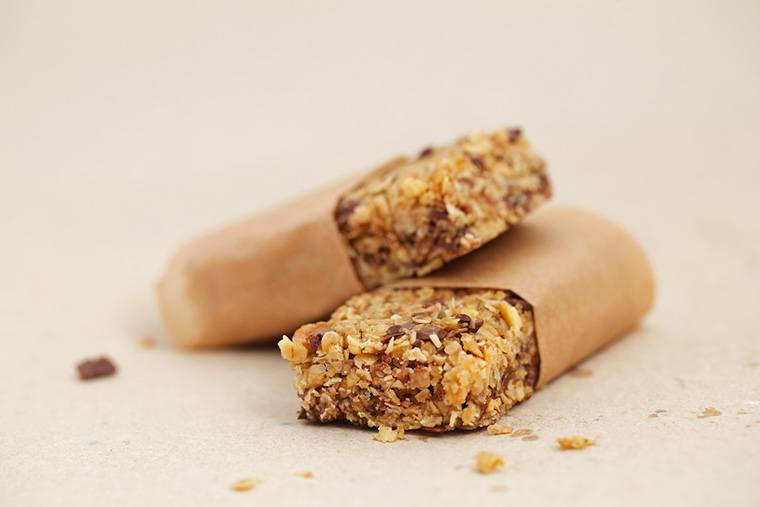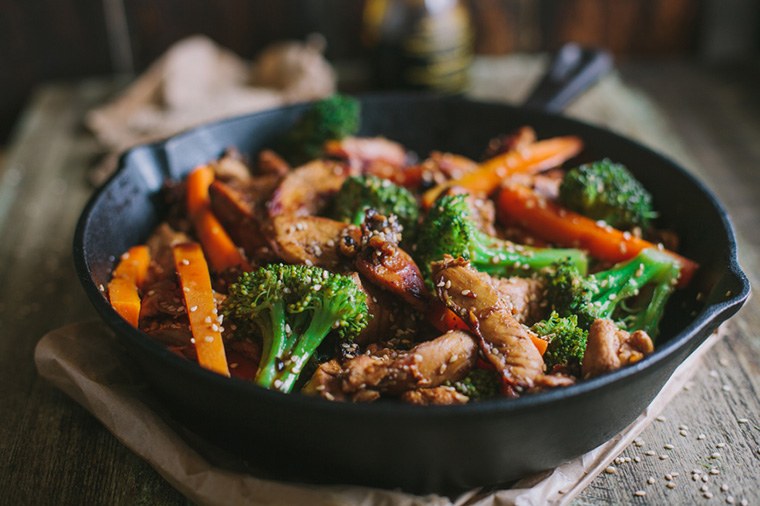At this point, sugar is so openly despised by anyone worth their Himalayan salt in the wellness world that it's not even controversial. Sure, not everyone goes as far as Frank Lipman, MD, who calls it "the devil," but you'd have to be living in a gingerbread house in Candy Land to think it's even a tiny bit good for you. So when I heard that Blake Lively gave up soy, not sugar, to tone up for her bikini-clad role in The Shallows last year, I was pretty surprised. I mean, how can soy—the stuff tofu and edamame is made of—be worse than sugar?
“Once you remove [it], you realize you’re eating no processed foods,” Lively told the Australian radio show The Kyle and Jackie O. at the time. “Everything you eat, there’s soy in it. Even the Whole Foods organic stuff."
“Everything you eat, there’s soy in it."
I still wasn't sold. One side effect of being Well+Good's food and health editor is that I've become almost conditioned to think about what I put into my body before eating it. Some habits I've developed since I started writing about inflammation for a living: Limiting dairy and gluten, putting turmeric on everything, and eating mostly plants.
That last habit means I happen to eat a lot of soy. Stir fry with veggies and tofu is a weekly meal for me. I also use it in place of meat in my salads when I'm too lazy to meal prep. And because I love spaghetti but cut out gluten, my pantry is always stocked with edamame pasta. Are those meals really that bad?
But hey, it's also part of my job to try out different diets, so I decided to live life Lively-style, nixing soy for a week. The experiment had its fair share of surprises.
What happens when you cut soy instead of sugar? Keep reading to find out.

Soy is in more food than you think
To Lively's point, soy is a top ingredient in most junk food—according to a British survey, it's in 60 percent of the processed food we eat, to be exact. Manufacturers use it to mix water with oil and keep baked goods moist. But because I don't typically nosh on Little Debbie cakes anyway, I didn't think I'd have to worry about this facet of the challenge too much. It's not that I don't snack, but when I do, I tend to reach for "healthy" foods, like Kind bars and Larabar bites.

{{post.sponsorText}}
Did you know Kind bars have soy in them? Neither did I until 3 p.m. rolled around the first day of my experiment, I reached for my go-to snack, and I read the ingredients list. Spoiler alert: Wheat Thins have it, too. Back in the drawer they went. Instead, I raided the office kitchen for a handful of almonds.
At home, my favorite desserts had to go, too. Goodbye, Justin's peanut-butter cups and Ben & Jerry's dairy-free ice cream. I almost cried actual tears as I reached for a spoon to scoop peanut butter out of the jar for a taste of something sweet. I only ate a spoonful before I put it back—I didn't even want it.

What I ate instead
My snacking and dessert habits weren't the only challenges. The biggest changes for me happened at lunch and dinner, when I'm usually most reliant on meat replacements to round out my meal. So, I ended up eating a lot more meat. Chicken became the go-to protein in my stir-fry and salads. And when I craved pasta, I made myself a big bowl of whole wheat spaghetti, gluten be damned.
Fortunately, my favorite breakfast foods—oatmeal during the week and eggs with avocado on the weekends—are naturally soy-free, so at least I got a break from reading ingredients' lists in the a.m. There's also no soy in almond milk lattes, so my coffee habit was safe, too.

My body changed—in less than a week
I've been thin, but not toned, for about as long as I can remember. And while I wasn't exactly on a mission to lose weight, after just five days of nixing soy, my clothes were noticeably looser. "Oh my God, you look amazing!" my friend greeted me when I ran into her at ModelFit. "Are you doing a new type of workout?" I wasn't—my fitness habits hadn't changed a bit.
I think the biggest reason giving up soy had a noticeable change on my body was that I really wasn't able to snack as much. It made such a difference—more than cutting gluten or dairy—that I decided to avoid soy for another week. Blake Lively, I'm sorry I ever doubted you.
Here's what didn't change: My digestion. Soy didn't have a noticeable effect on bloating or bathroom habits; ditto my energy levels. My new diet also didn't seem to affect my hormones, even though hormone regulation is a big reason many doctors encourage women to limit their soy intake. So while keeping consumption to a weekly minimum is widely advised (and while my hormones may have been more stabilized), I didn't notice a difference, in that respect.

How it's impacting my long-term eating habits
I may have been a hater, but after living a soy-free life for two weeks, I can't deny how healthy it made me feel. I still believe the main reason cutting soy had such an effect is because doing so automatically ruled out most processed foods—which yes, almost always also contain sugar. Now that the experiment is officially over, I've decided to continue to stay away from anything packaged containing it.
And as for my tofu-loving habits, I now limit it to once a week. Even after seeing firsthand results, I'm still unconvinced that using tofu in my stir fry is any less healthy than adding chicken instead. And I figure if a tofu dish is anyone's downfall, they're probably pretty darn healthy.
If you're game to give cutting soy a try, these recipes will make it easier. And here's what happens when you cut dairy.
Loading More Posts...